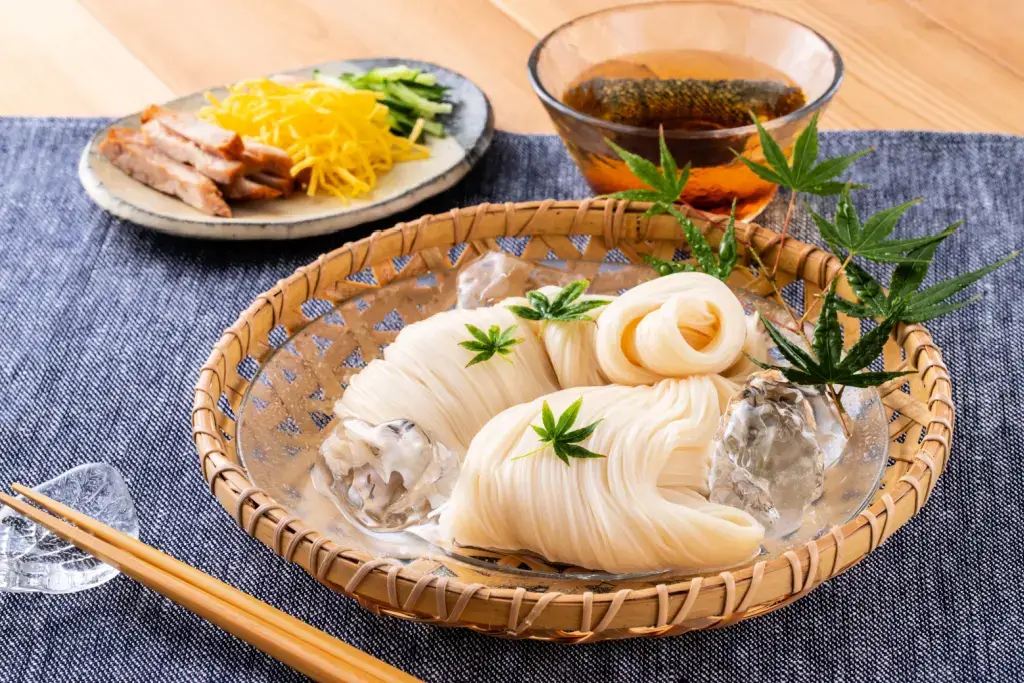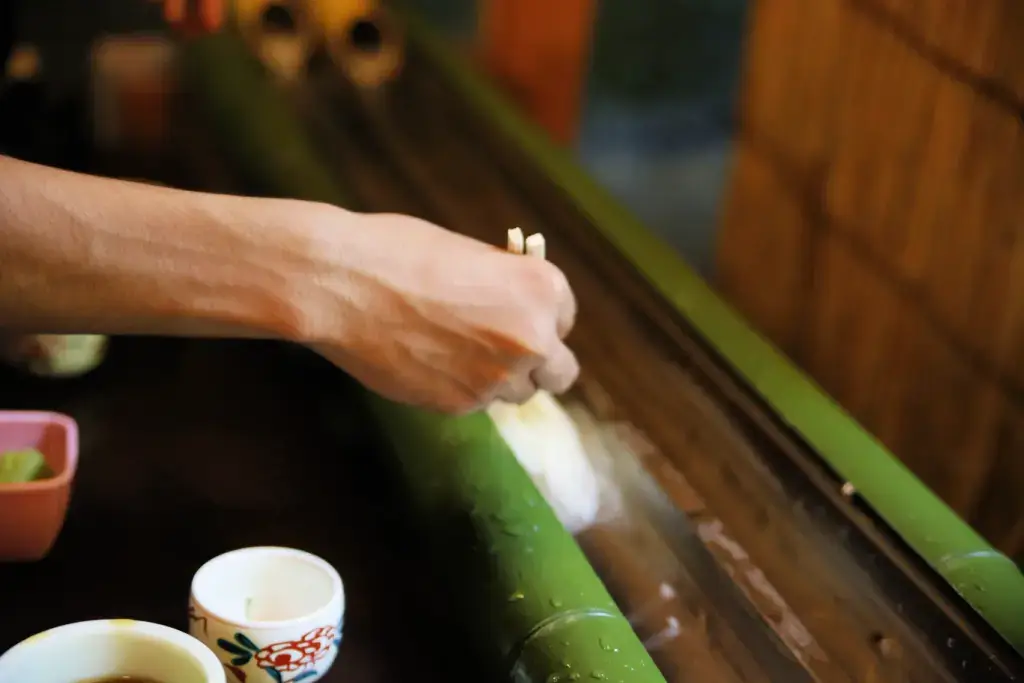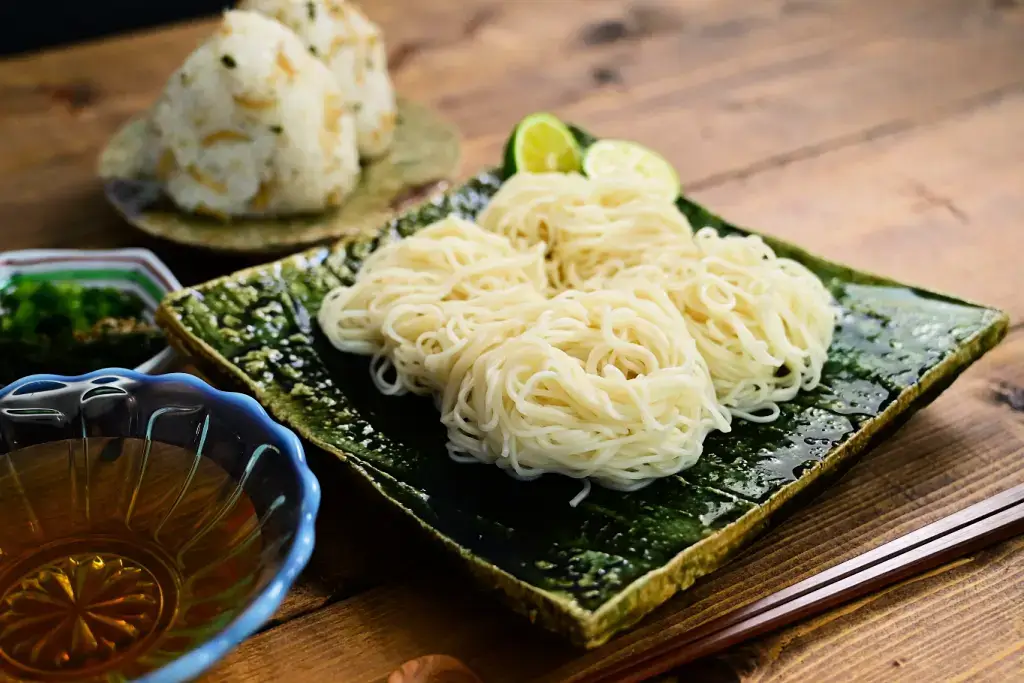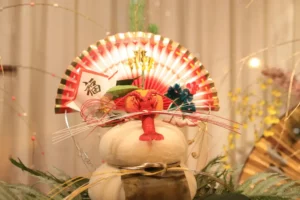Somen noodles offer a unique blend of tradition, taste, and fun. These thin, delicate noodles have a rich history and can be enjoyed in various ways, from warm broths to noodles flowing down bamboo chutes. For hot and cold dishes, somen noodles can be enjoyed all year round. Discover why people enjoy these noodles all over Japan!
Table of Contents
ToggleWhat are somen noodles?
Somen noodles, thin Japanese wheat flour noodles, boast a delicate texture and mild flavor. Measuring less than 1.3 millimeters in diameter, they are enjoyed both hot and cold. In summer, diners eat them chilled with a soy-based dipping sauce. During winter, cooks serve these noodles in soups. A unique serving style, nagashi somen, involves diners catching noodles with chopsticks as they flow down a bamboo chute in water.

To craft traditional somen noodles, artisans mix wheat flour with salted water to form a dough, let it rest, and then roll it into long ropes. They brush these ropes with oil, stretch them by hand, and hang them on bamboo sticks, which gives them their chewy texture. The sun dries the noodles before workers cut them into bundles. Modern production relies on machines to stretch and maintain the noodles’ thinness and quality.
Where did it come from?
These noodles originated over 1200 years ago in Miwa, Sakurai City, Nara Prefecture, Japan. At Omiwa Shrine, the oldest shrine in Japan, people prayed for relief from famine and disease. The gods guided them to plant wheat. They milled the wheat into flour, added water, and stretched it into thin noodles, creating what we now know as somen. People consider the shrine’s deity the guardian of somen.

Miwa somen’s history is deeply rooted in Japanese culture and tradition. During the Edo period, Miwa thrived as a stop for travelers, who spread the noodles across Japan. Today, Omiwa Shrine still hosts ceremonies to predict noodle prices and to give thanks at summer’s end. Miwa’s ideal climate, with its cold winters and clear skies, continues to produce high-quality noodles, celebrated for their thinness and smooth texture.
Are you looking for an artisanal snack after enjoying your noodles? Check out Sakuraco! Sakuraco delivers traditional Japanese snacks, teas, and sweets from local Japanese makers directly to your door so you can enjoy the latest treats directly from Japan!

How can I enjoy somen?
Nyumen
Nyumen is a traditional Japanese dish with somen noodles in warm broth. Originating from the Miwa region in Nara Prefecture, nyumen allows people to enjoy them in colder months. This dish combines the noodles with a savory broth and various seasonal toppings. The name “nyumen” means “boiled noodles,” and it developed over 200 years ago at Omiwa Shrine, where they were first created.

While these noodles is typically served cold, nyumen is best warm with broth poured over the noodles or cooked in the broth. This dish comes from local wheat and water wheel milling in the Miwa region. The region’s climate and milling techniques have helped maintain the quality of Miwa somen. Nyumen can be prepared with white dashi and egg or made more flavorful with chicken broth or vegetables.
Nagashi somen
Nagashi somen, meaning “flowing noodles,” is a fun Japanese way to eat these noodles. Generally, noodles flow down a bamboo chute filled with running water, and customers must catch them with chopsticks as they pass by. Moreover, the noodles are served cold, often with a dipping sauce, making them a treat in the summer. This method was created in the 1950s by a restaurant.

This dish most ideal in the summer, from June to August, when the weather is hot and humid. Not to mention, the challenge of catching the noodles adds to the fun, testing your reflexes and chopstick skills. Some places even serve nagashi somen year-round! Portable nagashi somen slides are also popular, allowing people to enjoy this experience at home. Overall, nagashi somen is a great way to cool down in the summer heat, wherever you are!
Why should I try somen?
Somen noodles are a must-try because you can enjoy them in any season! During summer, chilled somen with soy-based dipping sauce offers a refreshing treat, while warm nyumen provides a comforting meal in winter. Moreover, the traditional preparation methods and the unique dining experience of bamboo noodles add fun and skill, making each meal a great memory!

Another reason to try somen is its deep-rooted history and cultural importance; because people celebrated in festivals and rituals. Don’t miss the chance to try these noodles and discover why these noodles have been enjoyed for over a thousand years! Have you ever tried somen noodles before? How did you eat them? Let us know in the comments below!









